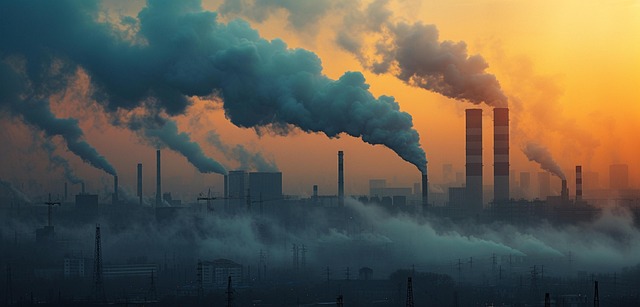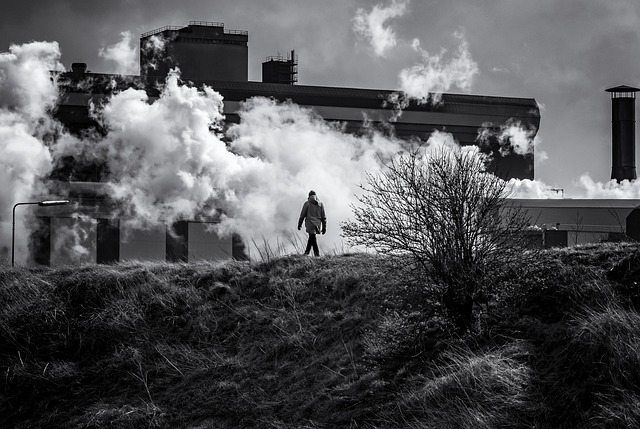The Clean Air Act (CAA) guides US agencies in combating air pollution through national standards and Select Emissions Regulations targeting industrial, transportation, and power plant emissions. These regulations reduce harmful pollutants like NOx, SO2, and VOCs, improving air quality and preserving the ozone layer. Strict enforcement, monitoring, and collaboration ensure compliance, while global cooperation harmonizes standards. Despite challenges from inconsistent guidelines and loopholes, efforts continue with agreements like the Paris Agreement, focusing on future strategies for sustainable environments.
Clean air standards are essential for safeguarding public health and the environment. This comprehensive overview delves into the fundamentals of the Clean Air Act, exploring key pollutants, their sources, and impacts. We dissect Select Emissions Regulations and how they’re implemented globally. The article highlights common challenges and loopholes, while charting future directions in air quality management. Understanding these dynamics is crucial for navigating towards healthier environments worldwide.
- Understanding Clean Air Act Basics
- Key Pollutants: Sources & Impacts
- Select Emissions Regulations: Overview
- Implementation & Enforcement Mechanisms
- Challenges & Loopholes: Common Issues
- Global Efforts & Future Directions
Understanding Clean Air Act Basics

The Clean Air Act (CAA) is a cornerstone of environmental policy in the United States, designed to protect public health and the environment by setting standards for airborne pollutants. At its core, the CAA mandates that the Environmental Protection Agency (EPA) establish national ambient air quality standards (NAAQS), which define acceptable levels of various pollutants, including ozone, carbon monoxide, sulfur dioxide, and nitrogen oxides. These standards guide state and local agencies in developing plans to achieve and maintain safe air quality.
One key aspect of the CAA is its authorization of Select Emissions Regulations, which target specific sources of pollution. These regulations encompass a range of measures, from industrial facility exhaust controls to international clean air legislation and transportation emissions control measures. The Act ensures that both domestic and international efforts contribute to natural resource conservation laws by promoting cleaner technologies and practices in various sectors, ultimately leading to improved air quality across the nation.
Key Pollutants: Sources & Impacts

The quality of the air we breathe is significantly impacted by various pollutants emitted from diverse sources. Key pollutants of concern include nitrogen oxides (NOx), volatile organic compounds (VOCs), particulate matter (PM2.5 and PM10), and sulfur dioxide (SO2). These substances originate from both point and non-point sources. Industrial facilities, power plants, and vehicles are primary emitters of NOx and SO2, contributing to smog formation and acid rain. VOCs, often found in household products and vehicle exhaust, trigger ozone production, a major component of ground-level ozone that poses health risks.
Particulate matter, composed of tiny particles and liquid droplets, is released from sources like combustion processes, construction activities, and biomass burning. PM2.5, with its ability to penetrate deep into the respiratory system, is particularly hazardous. Stringent automotive emissions rules and global warming emission restrictions have been instrumental in reducing these pollutants. Additionally, stringent water pollution control measures complement air pollution control techniques by addressing the environmental impact of pollutants entering aquatic ecosystems via atmospheric pathways.
Select Emissions Regulations: Overview

The “Select Emissions Regulations” are a critical component of global efforts to combat air pollution and its detrimental impacts on human health and the environment. These regulations target specific pollutants, focusing on those that have significant effects on both local air quality and the broader ecosystem, including the stratospheric ozone layer preservation. By implementing stringent standards, governments aim to reduce emissions from various sources, such as vehicles, industrial facilities, and power plants, to ensure cleaner air for all.
In addition to protecting the stratospheric ozone layer, these regulations also address greenhouse gas emission caps for factories, particularly those with high energy consumption. As clean energy alternatives gain prominence, solar panel emission profiles are becoming a key area of interest. Regulations encourage the adoption of renewable energy sources and technologies that minimize environmental impact while promoting sustainable industrial practices. This multi-faceted approach ensures a holistic improvement in air quality, contributing to a healthier planet and more livable urban environments.
Implementation & Enforcement Mechanisms

The successful implementation of clean air standards hinges on robust enforcement mechanisms. These include a suite of Select Emissions Regulations tailored to target specific pollutants from various sectors, such as transportation and industrial activities. Strict compliance with these regulations is ensured through regular monitoring, inspections, and stringent penalties for non-compliance. By leveraging advanced air pollution control techniques, countries can enforce the latest diesel emission standards and global warming emission restrictions, thereby achieving significant reductions in harmful pollutants.
Enforcement agencies play a pivotal role in navigating this process, collaborating with industries to adopt auto emissions reduction strategies and promoting best practices that foster clean air. This collaborative approach not only facilitates compliance but also encourages innovation in pollution control technologies, ensuring that the standards remain effective and relevant as environmental challenges evolve.
Challenges & Loopholes: Common Issues

Despite significant strides made in clean air standards and regulations worldwide, several challenges and loopholes remain that hinder our progress in achieving pure air quality. One major issue is the lack of consistent and stringent Select Emissions Regulations across different regions. Countries and industries often adopt varying standards, leading to a patchwork of environmental protection agency guidelines that can make it challenging for automakers and manufacturers to comply with global vehicle emission norms. This inconsistency exacerbates air pollution control techniques, particularly in areas where lax regulations allow higher-emission vehicles or industries to operate without adhering to the latest global warming emission restrictions.
Moreover, loopholes within these regulations enable certain sectors to avoid strict emission controls. For instance, sustainable transportation policies may encourage electric vehicles (EVs) but also permit older, less efficient models to remain on the road due to regulatory exceptions. Similarly, global vehicle emission norms can be bypassed through creative interpretations or loophole-exploiting strategies, undermining the effectiveness of overall air pollution control efforts. Addressing these challenges requires international cooperation and harmonization of standards, ensuring that all regions adopt robust and consistent environmental protections aligned with the latest scientific research on air pollution’s adverse impacts on human health and the environment.
Global Efforts & Future Directions

Global efforts to combat air pollution and ensure clean air standards have been gaining momentum, with many countries adopting stringent emission control measures. The Paris Agreement, for instance, has paved the way for international collaboration on climate action, including strategies to reduce greenhouse gas emissions that contribute to air quality degradation. As we look towards the future, there is a growing emphasis on selective emissions regulations, particularly targeting industrial sectors and transportation.
One key area of focus is the implementation of wildfire smoke emission controls to mitigate the adverse health impacts associated with wildfires, which have become more frequent and severe due to climate change. Additionally, the chemical plant emission controls and green building emission standards are gaining traction as sustainable practices. Furthermore, biodegradable material regulations are being introduced to promote eco-friendly alternatives in various industries, ensuring a cleaner and healthier environment for future generations.
Clean air standards, as outlined in the Clean Air Act, are a comprehensive framework for addressing key pollutants and promoting global environmental health. By understanding the basics, identifying sources and impacts, and implementing effective Select Emissions Regulations, we can significantly improve air quality. Despite challenges and loopholes, ongoing global efforts promise a brighter future, ensuring cleaner air for generations to come.
